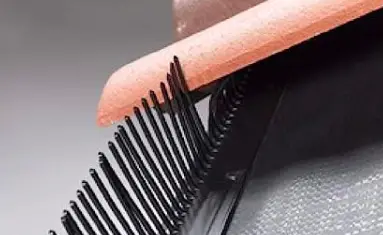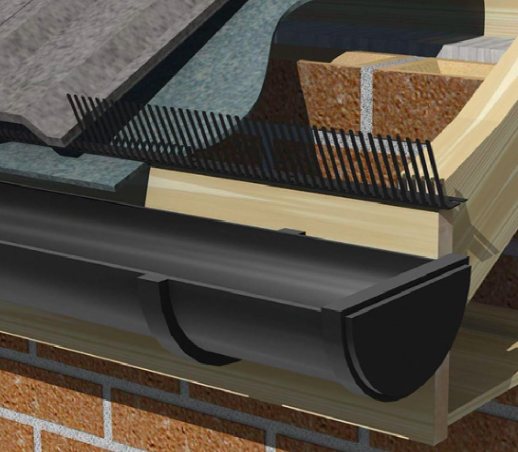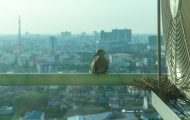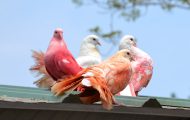Are birds driving you crazy, leaving behind a mess, and nesting in your eaves? Discover how to get rid of them with these helpful tips!
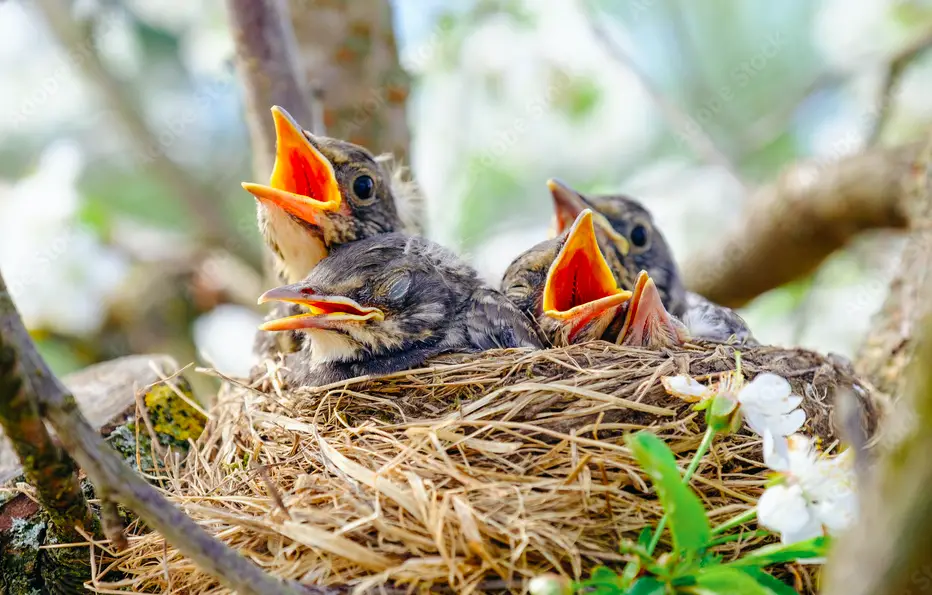
When it comes to removing bird nests, there are legal restrictions. Authorized personnel can only do so if public health is at risk or there’s a potential airspace hazard. In some cases, nests may be removed if they pose serious harm to animal feed, crops, vegetables, or fruits under the RSPB’s Wildlife and Countryside Act.
Once birds have nested, you can’t disturb them. So, what can you do to prevent future nesting?
It’s challenging to discourage birds nesting in eaves, but a combination of tactics can help. Make your home less inviting by removing their food sources, inspecting and repairing eave damage, and covering any gaps with wire mesh.
Consider using roof tile bird stoppers or spikes, as well as visual deterrents to scare them away.
Follow our expert tips for a bird-free home!
Check Your Damage Eaves
You will want to check for any damage or nesting that exists before you adopt a multi-stage plan to stop birds nesting in the eaves.
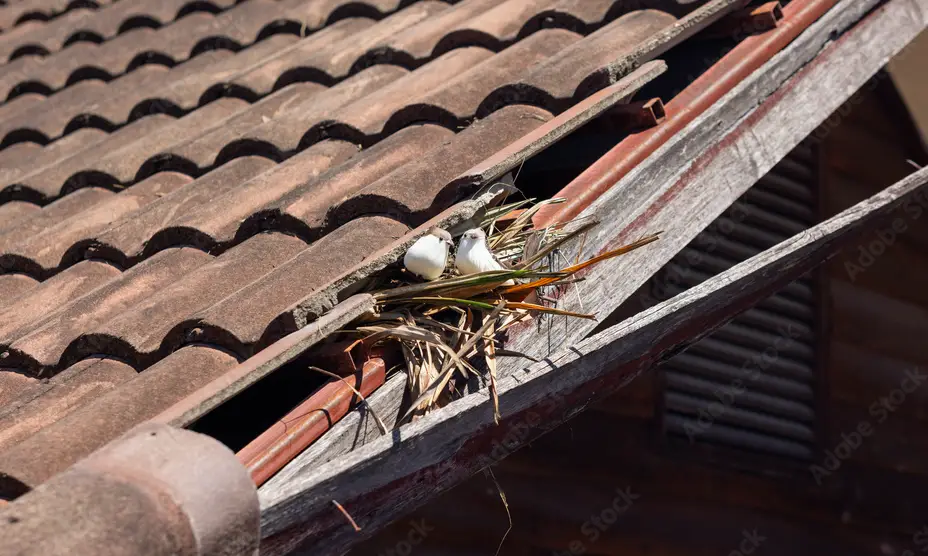
Control any troubles or damage to the eaves carefully. If you can see holes in your soffits–or the material eaves ceiling – and your fascia, the plates running along the bottom edge of the roof. They could nest inside your soffits in holes or move into the grass if other rodents, like a raccoon, have caused any damage.
Remove their sources of food
Keeping birds from nesting under your eaves requires a strategic approach that emphasizes the removal of their food sources. Birds like sparrows, starlings, and other species are naturally drawn to areas where they find an abundance of food and shelter. By taking proactive measures to limit their access to food, you can deter them from nesting in your property.
Here are some effective methods to achieve this:
1. Install Bird Netting:
Bird netting can be a valuable addition to your garden or open areas where birds tend to congregate. The netting creates a physical barrier, preventing birds from accessing your plants, crops, and other potential food sources. This humane solution ensures birds stay away from your property while preserving their safety.
2. Regular Cleaning
Standing water can attract birds looking for a drinking source and place to bathe. Regularly clean up areas where water might accumulate, such as bird baths, fountains, or gutters. By eliminating stagnant water, you remove a tempting water source for birds.
3. Mind Your Bird Feeder:
Bird feeders can unintentionally attract unwanted bird species if not managed correctly. During the nesting season, consider adjusting the feeder contents to discourage birds like sparrows and starlings while still attracting desirable species like cardinals. Opt for shell peanuts, striped sunflower seeds, safflower seeds, or nyjer to appeal to the birds you want to see, as these are less attractive to nuisance species.
4. Limit Outdoor Food Waste:
If you have outdoor eating areas or frequently entertain guests, be vigilant about cleaning up food scraps and leftovers. Leaving food waste exposed can attract birds and other pests, creating a food source that may encourage nesting nearby.
5. Choose Bird-Resistant Plants:
Landscaping choices can play a role in deterring birds from your property. Opt for plants and trees that are less attractive to birds, reducing the likelihood of them foraging for food in your garden.
By combining these methods, you can significantly reduce the appeal of your property as a nesting location for birds. Remember, it’s essential to approach bird control humanely, prioritizing the removal of food sources and providing an environment that encourages birds to seek alternative locations away from your eaves.
Check for holes
To safeguard your building from nesting birds, inspect it during winter for potential nesting spaces. Address any gaps or openings to minimize the risk of birds nesting in your eaves. Using a wire mesh on roof holes and gaps is an effective measure to prevent bird access and nesting.
Roof Tile Foam or Comb
Many small birds are attracted to the roof tiles due to their perfectly sized gaps in the eaves. Luckily, Expander Foam or Bird Comb Roof Tile Eave/ Fascia Gap Filler can easily solve this issue. These stoppers fit snugly into the gaps at the end of your roof, providing an effective solution to deter nesting birds. Keep your roof bird-free with our roof tile bird stoppers.
Install bird netting
When it comes to preventing birds from nesting in your eaves, bird netting serves as a highly effective physical barrier. Exclusion techniques like nets and bird stops outperform options such as bird deterrents or shiny objects.
Bird netting comes in two types: basic plastic and metal mesh, with copper mesh being ideal for long-term roof protection. Secure the net using a staple gun, suspending it from the wood underneath the eaves or from the roof edges to the ground during nesting season if needed.
Place a decoy
A decoy bird, such as a plastic hawk or owl placed on the roof, can deter birds from nesting on your property. These avian predators create fear in birds, discouraging them from approaching.
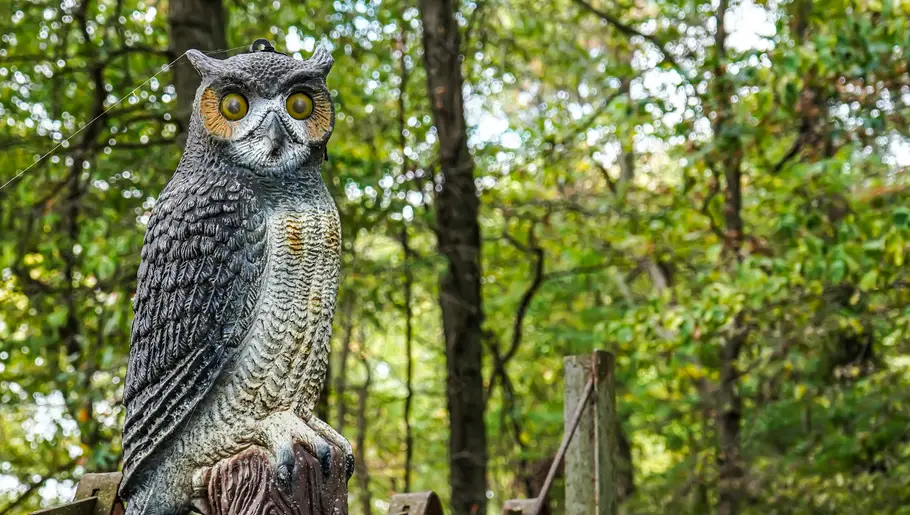
Check out our Top 7 Fake Owls To Scare Birds (The Buying Guide You Need!)
However, some birds quickly catch on to this tactic, so you need to change them out every so often. Visual bird scarers can be effective in preventing birds from nesting on roof eaves, but only in combination with other methods of bird control. Pigeons and some other species of birds will learn to ignore fearful sights if no birds are injured. However, results with options such as reflective bird dissuasion may be obtained for several weeks or months.
Bird spikes or coils
You can protect flat surfaces under and on your roof with different types of birds spikes if you are not in favor or want additional protection. These metal or plastic ports can almost anywhere be installed to create an uncomfortable nesting area. Usually, bird spikes can be fixed by self-adhesive strips or screws.
Because of the long-lasting protection, they offer over plastic. The downside of bird prongs is that not every bird is going to stop. They work best against bigger birds, but sparrow and starling, especially if you want to be under your roof, are not bothered. These birds can seize very well objects and then build nests over them, you can see them holding them up on the sides of the peaks.
You can also try bird coils if you have flat areas under the roof that you want to protect against birds. These extensible metal bobbins can be stretched across edges, beams, and joints and work when a bird is moving on them. You can work a little better against smaller birds than bird spikes because it is harder to build a nest against coils than spikes, but still, small birds nest between springs.
Visual Deterrents
Consider installing visual deterrents to scare birds away effectively. These deterrents come in two types: reflecting surfaces or predators like owls or hawks.
For best results, occasionally move these devices around to maintain their effectiveness. To heighten the illusion of threat, you can rotate them or change their positions every one or two days.
Conclusion
The 1981 Wildlife and Countryside Act safeguards birds, making it illegal to remove occupied bird nests. While some nests are used once, others return annually.
Though it can be frustrating, taking precautionary measures is essential. Avoid removing nests or disturbing birds while they are nesting from spring to early autumn. The Federal Act protects most birds, except for pigeons, European starlings, and house sparrows, which have some exceptions.
To ensure safety and legality, refrain from damaging nests with eggs or young birds. If nest relocation is necessary, it’s best to seek assistance from a professional to carry out the task properly.

